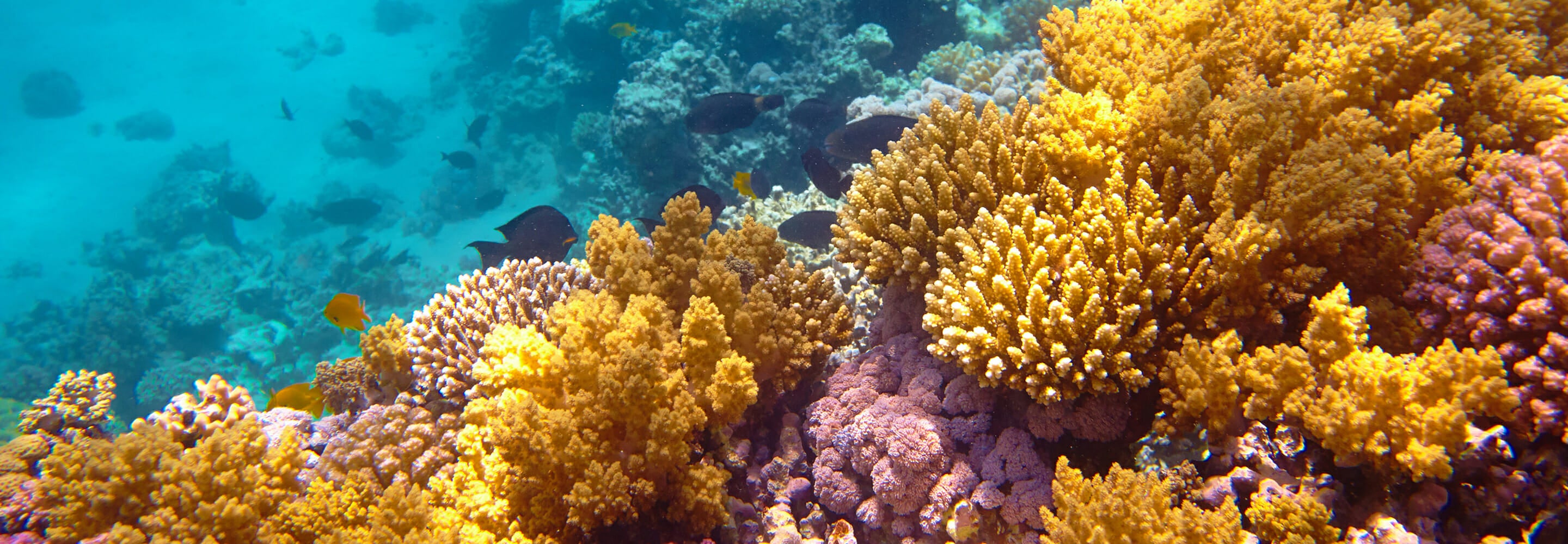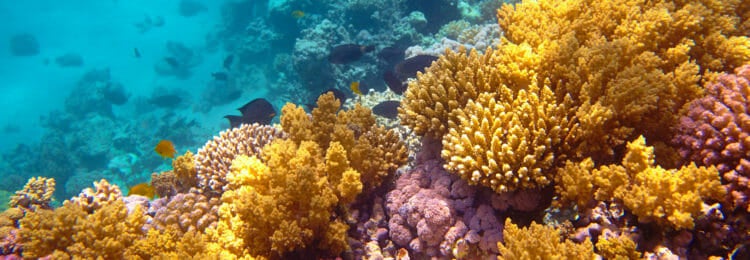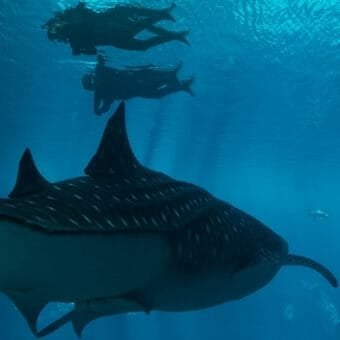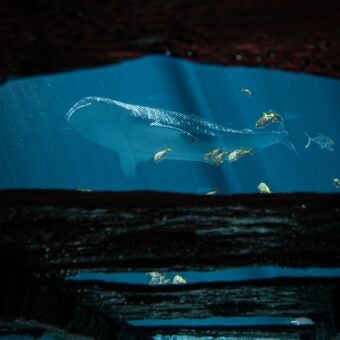-
Size
11 feet (3.4 m) -
Diet
Bottom dwelling fishes, bivalves, crabs and shrimp -
Range
Indo-West Pacific -
Habitat
Reefs and shallow lagoons to outer reef slopes
Physical Characteristics
- Maximum length of nearly 11 feet (3.4 m) (snout to tail). Disc widths of about 10 feet (3 m) and weights of 330 lbs. (150 kg) have been reported.
- Deep and prominent ventral skin fold that extends to the tail tip.
- Large stingray with a circular disc, no thorns, and a black and white mottled upper surface.
Animal Fact
The round ribbontail ray species is ovoviviparous, hatching its eggs inside its body then giving birth to live young.
Diet / Feeding
- Diet consists of bottom dwelling fishes, bivalves, crabs and shrimp.
- To find prey this ray often excavates large holes in the sand by blowing water from its mouth.
Range / Habitat
- Occurs in the Indo-West Pacific from the Red Sea and East Africa to Southern Japan, Micronesia and tropical Australia.
- Usually associated with reefs, also found in a wide variety of habitats from shallow lagoons to outer reef slopes.
- Most commonly encountered from near the surface to depths of 65-200 feet (20-61 m).
Reproduction & Growth
- Ovoviviparous- eggs hatch internally and are born as live young.
- Litters of up to seven pups are born at approximately 13 inches (33 cm) in disc width.
Conservation Status
- “Vulnerable” on the IUCN Red List.
Additional Information
- Formerly Taeniura meyeni.
- Also called the “marbled ray” or “black blotched fantail ray.”
- Can be found swimming alone or in schools; often accompanied by jacks or cobia swimming near them.
- Fished commercially in some parts of its range, valued for its meat and cartilage. May also be sought by recreational fishermen. Often also captured as bycatch in other fisheries.
- A stingray; possesses a venomous barb at the base of the tail.



